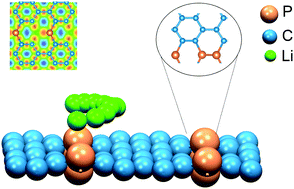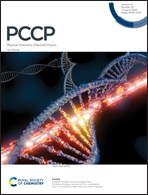Monolayer PC5/PC6: promising anode materials for lithium-ion batteries†
Abstract
Employing two-dimensional (2D) materials as anodes for lithium-ion batteries (LIBs) is believed to be an effective approach to meet the growing demands of high-capacity next-generation LIBs. In this work, the first-principles density functional theory (DFT) calculations are employed to evaluate the potential application of two-dimensional phosphorus carbide (2D PCx, x = 2, 5, and 6) monolayers as anode materials for lithium-ion batteries. The 2D PCx systems are predicted to show outstanding structural stability and electronic properties. From the nudged elastic band calculations, the single Li atom shows extreme high diffusivities on the PCx monolayer with low energy barriers of 0.18 eV for PC2, 0.47 eV for PC5, and 0.44 eV for PC6. We further demonstrate that the theoretical specific capacity of monolayer PC5 and PC6 can reach up to 1251.7 and 1235.9 mA h g−1, respectively, several times that of a graphite anode used in commercial LIBs. These results suggest that both PC5 and PC6 monolayers are promising anode materials for LIBs. Our work opens a new avenue to explore novel 2D materials in energy applications, where phosphorus carbides could be used as high-performance anode in LIBs.



 Please wait while we load your content...
Please wait while we load your content...